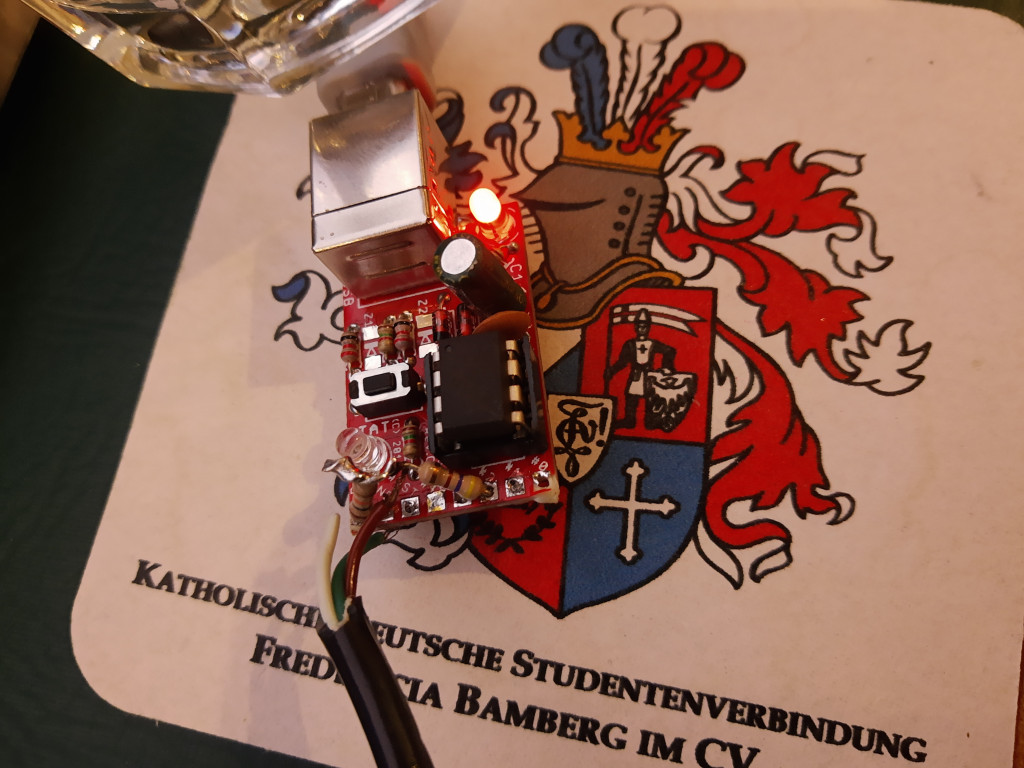1.8 KiB
| title | author | date | tags | categories | draft |
|---|---|---|---|---|---|
| Project Шайба | Blagovest Petrov | 2023-01-12T09:34:51+03:00 | [DIY Vintage Hardware] | [Travel] | false |
{{< youtube id="21tYPqg4334" >}}
Update
So, here is the code. It's really simple gadget. The whole setup took me less than a hour for building and coding.
I got the rotary dialer from a local auction site, like Ebay. My first idea was to include everything inside it's box and leave only the USB cable outside but it was encapsulated and I didn't have any success for opening it. Originally, the cable had 5 pin DIN connector but only three pins were connected ( White, Brown and Green):
Green: Ground⏚Brown: Impulse pin. It's used for counting the impulses. Tje pin outputs1on equal intervals.White: It's alwaysUPif the encoder is rotating. I didn't use this one because themillis()is enough counting the time. It may overflow after some time, but I'm thinking about this in the time of writing this post :)
The board that I used it OLIMEXINO-85-ASM. I got a bunch unsoldered some time ago. It's clone of the Digispark board with ATtiny85 controller. A really cheap board with software implementation of USB :)) DigiKeyboard.h.
The Brown pin is connected to Pin 2 of the board, as it's shown in Instructables.
TODO: Removing the USB-B port and wiring USB-A cable directly to the PCB; Possible case for the board.
Update2: It's even funnier using it with a mobile phone. Works perfect with USB-C to A converter.
Update2: Similar project from 2015
{{< youtube id="_DI2a2eZEac" >}}
